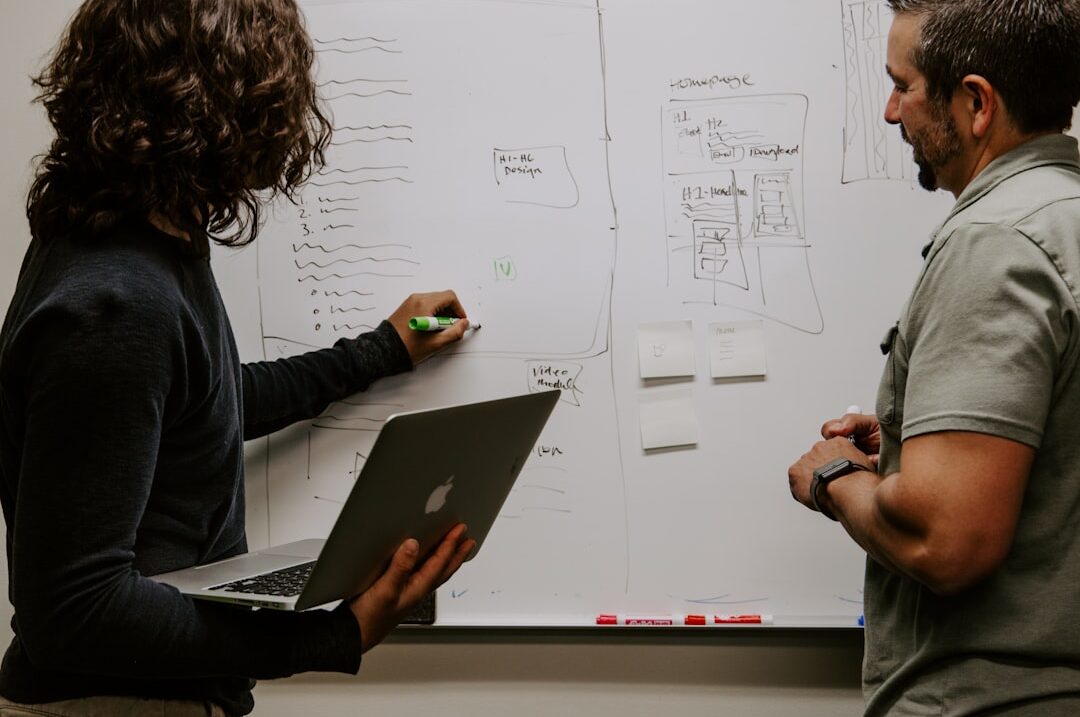Top Quality Assurance Engineer Interview Questions 2025 (+ Expert Tips)


Ready to Ace Your Next QA Interview?
Practice unlimited mock interviews for free with Huru.ai and get instant, actionable AI feedback. Start now—your future self will thank you!
Navigating the 2025 QA Interview Landscape: What’s Changed?
The role of Quality Assurance (QA) Engineers continues to evolve rapidly in 2025. Employers now seek candidates who not only master foundational testing but also bring expertise in automation frameworks, CI/CD, and AI-driven testing. Gone are the days of rote manual checks—today’s QA interviews demand strategic thinking, scenario analysis, and an agile, automation-first mindset.
This guide demystifies the latest QA engineer interview questions, provides detailed sample answers, and arms you with actionable tips—so you’re not just ready, but unshakeably confident.

The Ultimate Question Bank: QA Interview Questions by Category
Let’s break down the essential Quality Assurance Engineer interview questions for 2025—organized by category, with sample answers and expert guidance. This is your toolkit for every possible scenario.
1. Technical & Automation Testing Questions
- How do you design a scalable test automation framework for a microservices architecture?
Sample answer: “I use modular approaches (e.g., Page Object Model, Factory) and tools like Cypress or Playwright; every service gets isolated tests and common utility libraries. I ensure compatibility with CI/CD tools like Jenkins or GitHub Actions. I monitor flakiness with dashboards and integrate with API monitoring tools for end-to-end validation.” - What are the major differences between Selenium, Cypress, and Playwright?
Sample answer: “Selenium is versatile but slower and less modern. Cypress excels at fast, easy-to-debug frontend testing but is limited to JavaScript. Playwright offers cross-browser support, multi-language APIs, and better support for modern web apps and parallelization.” - How do you ensure test reliability in CI/CD pipelines?
Sample answer: “By prioritizing stability over speed, running flaky test detection, using parallelization, and implementing quality gates that block merges on critical failures. I also leverage tools like Allure Reports for actionable test feedback.” - Explain how you would test eventual consistency in distributed systems.
Sample answer: “I design tests with retry logic, validate data at multiple states, and use monitoring/tracing tools like Jaeger or Zipkin to ensure system-wide consistency.” - Which metrics do you monitor to measure software quality?
Sample answer: “Bugs per release, escaped defect rate, test coverage, Time to Quality (T2Q), and customer-reported issues. I visualize these with dashboards and act on trends, not just point-in-time values.”
2. Test Planning & Strategy Questions
- How do you prioritize test cases for risk-based testing?
Sample answer: “I evaluate feature usage, business impact, historical defect density, and technical complexity. Priority is given to critical flows, integrations, and recent code changes.” - Describe your approach to building a test plan for a new SaaS product.
Sample answer: “I gather requirements, identify user personas, define acceptance criteria, choose test types (unit, integration, UI, API), and map out timelines/resources. I align with devs and product owners for coverage and transparency.” - How do you adapt your QA process for Agile/DevOps?
Sample answer: “I automate regression, participate in sprint ceremonies, use BDD (Cucumber), and advocate for shift-left testing. Quality is everyone’s responsibility, and I facilitate knowledge-sharing and retrospectives.” - What’s your experience with exploratory testing?
Sample answer: “I use charters, session-based timeboxing, and mind maps. I focus on user journeys, edge cases, and creative failure points.”
3. Behavioral & Situational Questions
- Tell me about a time you found a critical bug just before release.
Sample answer (STAR): “Situation: Major product launch. Task: Final smoke test. Action: Detected a payment gateway failure, escalated with evidence, coordinated a rapid fix. Result: Release was delayed by 2 hours but prevented major revenue loss.” - How do you handle pushback from developers about reported bugs?
Sample answer: “I provide clear repro steps, video/screenshots, and business impact. I focus on shared goals and facilitate open, respectful dialogue.” - Describe a time you improved the QA process.
Sample answer: “I introduced automated API testing, reducing manual effort by 40% and catching regression bugs earlier, freeing the team for exploratory and risk-based testing.” - How would you test a broken toaster? 🍞
Sample answer: “I’d clarify requirements, test power, timers, heating elements, safety mechanisms, and user experience. I’d also try edge cases—what if you insert a metal object, or run it with no bread?”
4. QA Metrics & Reporting Questions
- How do you report test progress and quality to stakeholders?
Sample answer: “I use dashboards (JIRA, TestRail), summarize defect trends, and align reporting with business risk. Visuals trump raw numbers!” - What’s the difference between severity and priority?
Sample answer: “Severity is the impact on the system; priority is the urgency to fix. A typo in the logo is low severity but could be high priority for a launch!” - Which QA metrics do you watch for continuous improvement?
Sample answer: “Defect density, mean time to detect, T2Q, escaped defects, and test execution rate.”
5. Soft Skills & Team Collaboration Questions
- How do you advocate for quality on cross-functional teams?
Sample answer: “I champion knowledge-sharing, lead root cause analysis sessions, and drive a quality-first mindset—testing isn’t a gate, it’s a partnership.” - What’s your approach to onboarding new QA team members?
Sample answer: “I document processes, pair for hands-on learning, and create safe spaces for asking questions and learning from mistakes.”
💡 Key Takeaway
Tailor your answers to the company’s tech stack and culture. Reference Huru’s instant feedback to identify your blind spots and turn them into interview strengths!
Scenario-Based QA Interview Questions (with Answers)
Scenario and case-study questions are a staple of the 2025 QA interview. They test your analytical thinking, adaptability, and ability to innovate under pressure. Here are three realistic scenarios—and how to tackle them:
- Your test cases are failing intermittently in CI. What steps do you take?
Answer: “Diagnose flakiness (timing, environment, data resets), review system resource logs, check for dependencies, and rerun locally. Use tools like Huru to simulate CI conditions and analyze AI-driven root cause feedback.” - A new feature is released with no documentation. How do you test it?
Answer: “Reverse engineer through UI/API exploration, interview the developer/product owner, write exploratory charters, and prioritize risk-based smoke tests. Document your findings for future reference.” - Production bugs are escaping your test coverage. What next?
Answer: “Perform a root cause analysis, expand regression suites, introduce error monitoring, and advocate for a blameless postmortem. Leverage Huru’s instant feedback to refine your testing strategy.”
💡 Key Takeaway
Scenario questions reveal your mindset. Practice responding to new situations using mock interviews—AI feedback will sharpen your instincts for the real thing!
Essential QA Tools, Frameworks, and Technologies for 2025
Recruiters love when you’re up to date with the latest and greatest. Here’s a table of must-know QA tools and technologies for 2025:
| Category | Tools/Frameworks |
|---|---|
| Automation Testing | Selenium, Cypress, Playwright, TestCafe |
| Performance Testing | JMeter, Gatling, k6 |
| Bug Tracking | JIRA, Bugzilla |
| CI/CD | Jenkins, GitHub Actions, GitLab CI |
| Reporting & Metrics | Allure, TestRail, Zephyr |
| Monitoring & Observability | Jaeger, Zipkin, New Relic |
| AI Interview Practice | Huru.ai |
Pro tip: Mentioning specific tools relevant to the company’s stack always impresses interviewers! Learn more about practicing with Huru’s interview simulator.
How to Prepare for Your QA Interview: Tips for 2025
- Research the employer. Know their products, tech stack, and industry challenges.
- Map the job description. Prepare STAR stories that align with every bullet point.
- Practice with AI-driven tools. Use Huru.ai to simulate real interviews and receive feedback on your delivery, tone, and content.
- Master the latest tools and frameworks. Don’t just list them—describe real use-cases and value added.
- Prepare thoughtful questions to ask interviewers. E.g., “How does your team approach automation debt?” or “What’s your process for introducing new quality metrics?”
💡 Key Takeaway
Every great QA interview starts with practice. Don’t just read—get comfortable speaking out loud, simulating real pressure, and using feedback to improve. Start a free mock interview now.
Video: Top QA Automation Engineer Interview Questions (2025)
Watch this expert video for a rapid rundown of core QA automation questions, frameworks, and interview prep strategies for 2025:
Frequently Asked Questions (FAQ): QA Engineer Interviews in 2025
A: Demonstrate up-to-date technical knowledge, scenario-based problem-solving, and an understanding of agile/DevOps. Reference your practice with AI-driven tools like Huru.
A: Communication, collaboration, analytical thinking, adaptability, and a quality advocacy mindset.
A: Automation skills are in high demand, but an ability to strategize and explore scenarios manually is still highly valued—especially for complex or creative edge cases.
A: Use Huru’s interview platform for unlimited mock QA interviews, instant feedback, and continuous improvement.
💡 Key Takeaway
Interview success is about confidence and preparation. Build both with Huru’s free mock interviews—and walk into your next QA interview ready for anything.
About the Author
Elias Oconnor is a content writer at Huru.ai, specializing in career tech, interview strategies, and AI-driven job search solutions. Elias is passionate about making job seekers unstoppable—one practice interview at a time.


 Jun 30,2024
Jun 30,2024  By Elias Oconnor
By Elias Oconnor